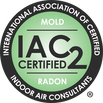Mike's Home Inspector BlogMichael Burfitt |
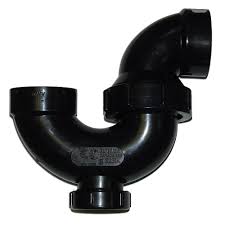 Just as a house needs a way for water to get into a home, it also needs a way to get that water out of the home, so that brings in DWV or Drain, Waste and Vent Plumbing. As its name implies, it has three functions. They are… surprise…. to drain water, remove waste and provide venting. As mentioned previously, DWV plumbing looks straightforward but is actually a fascinating engineered system that usually needs a professional plumber to install properly. I will not bore you with all the details but here is the 101: All Fixtures Need a Trap (Except One) Did you know that all appliances in your home must have a trap, commonly known as a “P” trap? The “P” does not stand for “pee” (it is shaped like a sideways “P”) and it is not designed to catch rings (although that is a nice bonus) but is designed to keep sewer gases from entering the home. These gases are not only gross but in large quantities are extremely flammable. The only exception to this P trap rule is the toilet because it has a trap built into it. There are a bunch of other traps, such as S- traps, drum traps and bell traps that are no longer permitted and should be replaced. The System is Designed to Move Water AND Air While it is generally not visible to homeowners, in many cases the majority of DWV pipe does not carry any water at all. The system is designed to use gravity to move waste to the lower levels (and out of the home) but also needs air to both balance pressure (to prevent backflow) and allow sewer gases to escape. This is why almost all homes have a black pipe sticking out of the roof: to balance air pressure all allow that nasty sewer gas to escape. DWV Pipes are Different Than Supply Pipes While there is some overlap between supply and waste lines materials (i.e., you can use copper for both supply and waste pipes) the DWV pipes are larger and since the 1970s are usually made of plastic: either ABS (black) or PVC (white). There are plenty of hints that inspectors such as yours truly use to identify potential issues in the plumbing system. The two most obvious are bubbles or gurgling when flushing the toilet (indicating improper air venting) and a loose toilet, which will eventually lead to sewer gas entering the home. A home inspector can also advise you on whether further evaluation from a plumber is required to determine the root cause of the issue and make repairs as necessary. Did you know that your home has at minimum, not one but two plumbing systems that need to be kept completely separate? They are:
Most homes in the Halifax core are connected to Halifax Water and one of its 2 large (Pockwock & Lake Major) supply plants. It is supplied to homes in various pipes with the biggest concern being lead pipes. If your home was built before 1960 and is located on the Halifax peninsula or Dartmouth inside Highway 111 there is a chance you have lead pipes and should have them inspected. Other concerns for the home inspector are homes that use the following types of supply pipe: Galvanized Steel The main issue with this type of supply pipe is its age. As it has not been widely manufactured for over 60 years, the 40-to-50-year life expectancy has long since passed. The other main problem with this type of plumbing is that they will rust from the inside out, leading to low pressure, rusty water, and ruptured pipes. These pipes should be replaced as soon as possible. Polybutylene (PB) and/or Kitec (PEX-AL-PEX) There have been large class action lawsuits field against the manufacturers of both products alleging that they have an unacceptably high failure rate. While the internet is full of horror stories in my experience there have been very few problems with both types of pipe here in Canada and are usually the result of poor fittings. The main concerns are that if these pipes fail, they tend to catastrophically burst rather than leak and that some insurance companies refuse to insure homes with these types of pipes without some form of mitigation, up to complete replacement. I touched upon Kitec in a previous article and this type of piping is usually used in heating systems with PB a popular choice for water supply in the 1990s. With all that out of the way, what is a good type of pipe to use? Generally, two main types are used today: Copper (usually Type L) and Plastic (usually PEX or Cross-Linked Polyethylene). There are pros and cons to all these types of piping and a qualified contractor can advise on the best option for your home. It is very important that supply piping be kept separate from DWV piping as this can lead to serious, even fatal cross contamination. The biggest issue I see is homeowners leaving garden hoses connected when not in use: this can lead to outside water being drawn into the potable water supply and they should be disconnected when not in use. 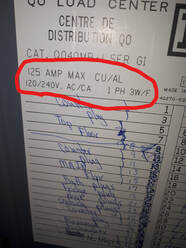 If you have ever looked at your electric panel, you might see a label similar to this. If you are like most homeowners, you have no idea what all the circled numbers and letters mean. Let us take a quick look at each one: 125 AMP MAX This is a measure of the maximum amperage rating. Simply put, this is a measure of the flow of electricity. Most modern houses have a 200-amp service although I have seen service as low as 100 amp without issue. There are systems that are smaller than 100 amp but in general, many insurance companies will not insure a home with less than 100 amp mostly due to the fact these are generally older systems and do not meet a modern family's needs. CU/AL This means that this panel can use either copper or aluminum conductors. You may have heard that aluminum wires are a major fire hazard and while that can certainly be true, there are many situations where they may be used safely. Your home inspector should be able to tell you if you have aluminum wiring and if so, whether an electrician should be consulted. 120/240V This is a measure of the voltage (pressure) this system is designed for. Well over 99% of homes in North America use what is known as a split phase system that uses two 120V service wires (120+120=240). While there are some properties that use just one 120V (mostly very old homes or cottages), I have never encountered one in the field. Fun fact: you may have heard that high voltage is very dangerous and while in most cases this is true, there are some ways that getting shocked with high voltage can be perfectly safe. Did you know that a simple static shock can deliver between 20,000 to 30,000 volts? AC/CA This is an acronym for alternating current in both English and French. I could write several essays on alternating vs direct current (DC) and why we receive power as AC yet use DC in most appliances and gadgets but, with the exception of solar systems, nearly every home receives power from the utility as AC and this is a standard designation. 1 PH This refers to the fact that this panel is designed for single phase power. To make a complex concept simple, there are two types of phasing used: single phase and three phase. Almost all homes and small businesses use single phase and three phase is used in large buildings. The way inspectors tell single from three phase power is the number of hot service wires, which brings us to our last point. 3W/F This means that is designed for 3 wires from the utility: 2 hot (usually black and red) and 1 neutral (white) wire that services the home. Three phase systems usually have an extra hot wire (any color except white or green but usually blue) and are extremely rare in homes. Still confused? Let me quickly summarize: the only thing you need to worry about as a new or existing homeowner is the amperage, which usually varies from 100 to 200 (and up) amperes. The rest is standard to nearly every home and any deviation should be investigated by an electrician. 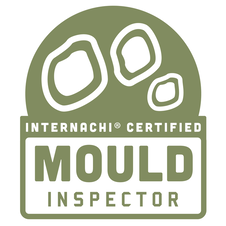 One of the biggest concerns I see as a home inspector involve air quality and mould. What exactly is mold and is it dangerous? The most important thing to know is that there is no such thing as “toxic mould” or “black mould”. Mould is a part of the fungi family, to which nobody knows how many species of fungi exist. The most common types of indoor molds are:
The main area of concern for the home inspector are:
So, what is a homeowner to think? This topic is a perfect example of why I am a systematic home inspector and not an “electrical” or “plumbing” or “structural” inspector as these systems are all interdependent in a home. While I could lull you to sleep with my many hours of research, the biggest takeaway is that moisture control is the key to mould control. Did I mention that moisture is the sworn enemy of the home inspector? Here are some steps you can take to keep mould growth at bay:
Moulds are not generally dangerous but any signs of mould (such as black patches on the bathroom ceiling) should be handled as soon as possible. Generally, it is NOT a good idea to use biocides, chlorine, or other disinfectants as this will not eliminate the root cause, and dead mould can still cause respiratory problems. The best course of action is to prevent mould from taking foot by…. you guessed it…. moisture control. You may have noticed some similarities to this article and my first article on radon and that is no coincidence: the strategies for clean air, mould, asbestos, and radon mitigation are largely the same and can be summed up in three points: source control, improved ventilation, and air cleaners.
|
Archives
July 2024
Categories
All
|
|
Inside Edge Home Inspections Ltd.
Halifax, NS 902-209-9921 [email protected] Proudly Serving the HRM & Central Nova Scotia |
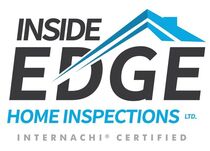
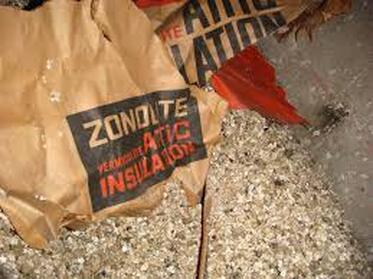
 RSS Feed
RSS Feed

